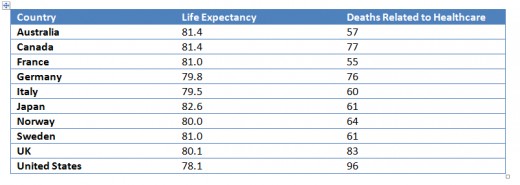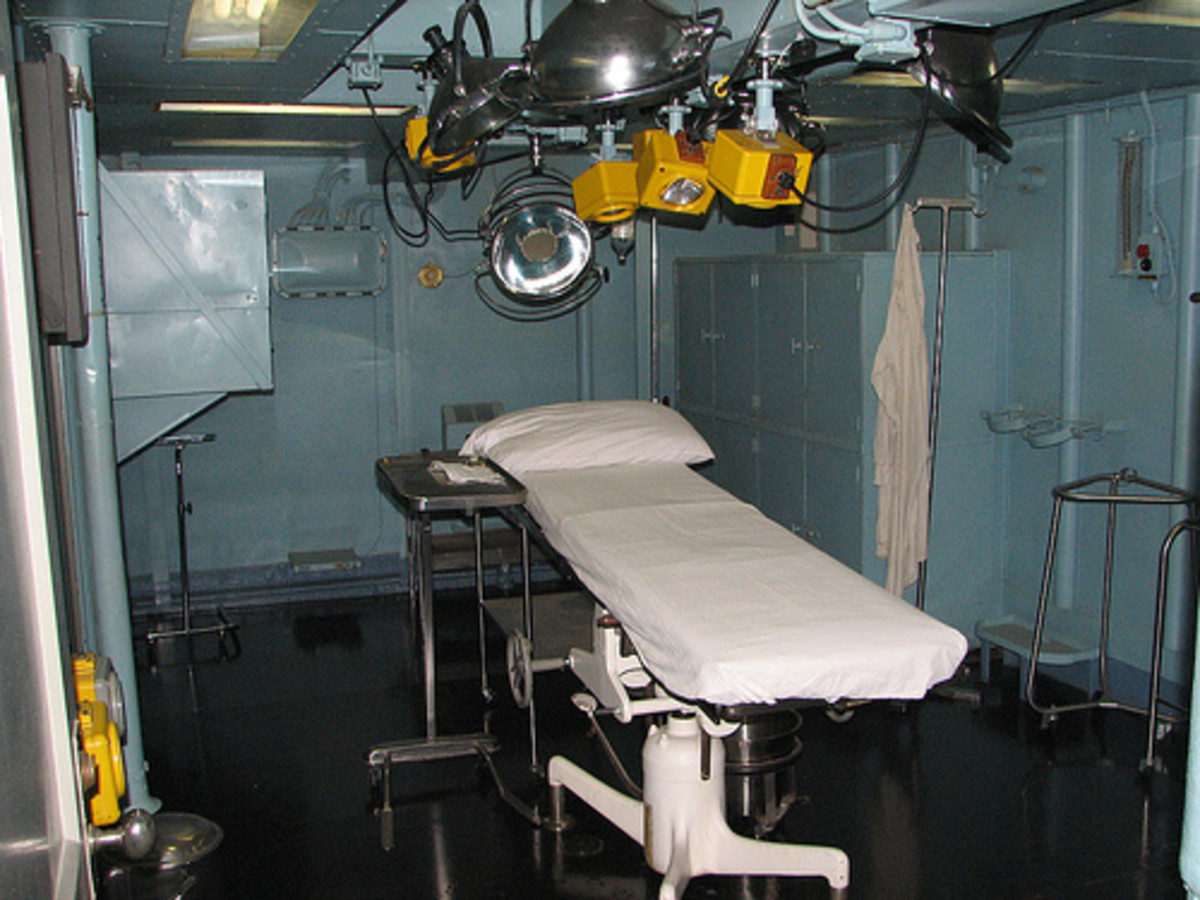Why Healthcare is So Complicated in America.

“ObamaCare,” has caused scrutiny on our healthcare system. If enacted, 34 million people acquire access to healthcare. Why is America not prepared for the task?
We have all seen the horrible numbers. One in Six Americans doesn't have or has substandard health insurance coverage. Injured and sick people are using the emergency room for access to healthcare, and hospitals are becoming bankrupt with uncompensated care costs. Premiums are rising so high that employers can’t share the costs, and are cutting down employee’s hours so they don’t have to pay for healthcare. So why is healthcare so wrong in America?
Medical School in America is Expensive
Although many research studies conclude that medical students are overwhelmingly from wealthy families, the remaining students acquire an average of about $135,000 in school loans. If a physician decides to continue into a specialty, such as radiology, neurology; the debt can double by graduation. Regardless of high grades and a high desire for medical college, only those with the ability to afford it or the willingness to accept the substantial high balance due can enter medical school.
Salaries for physicians are way above the average for most professions in America. Although salaries range from $150,000 -500,000, or more depending on specialty, it can take 20-25 years to pay off student loans. Doctors also may struggle with the costs of starting a private practice, excessive equipment and staff costs, and don’t begin to earn until in their late 20’s or early 30’s.
In Europe, medical students with high grades and a dedication to medicine are trained for very low costs—even free. France trains their students for practically free, while Germany encourages their university students to enter medical school with a promise to forgive school loan debt. Students in the United Kingdom can expect tuition at about $5,000 a year.Australia and Canada also have significantly lower costs.
The Doctor Shortage
The high cost of med school discourages many potential applicants, especially minority and middle-lower income students. This discrepancy in diversity limits not only the amount of physicians in practice, but the diverse backgrounds of those in practice. For example, a physician with staggering debt cannot possibly afford to practice in a small rural town after graduation, thus, many people in rural areas do not have access to medical supervision.
The primary care physician shortage is growing at an alarming rate, with an estimation of only 3 in 10 doctors selecting that field. Even with a wide variety of school loan forgiveness programs available, the trend begins to rise with a shortage of 40,000 primary care physicians predicated by 2021.
For various reasons, fewer and fewer students are applying to medical school every year. One out of three practicing physicians is over the age of 55, and is expected to retire in the next 10-15 years. This exodus represents losing 30% of the workforce, and American med schools have not supplied vacant spots with med students. At the same time, the US Census Bureau estimates the 46 million people over the age of 62 will increase to 83 million by 2030.
Physicians increasingly feel they are no longer autonomous in a patient-centered approach as insurance companies deny coverage for blood tests, diagnostics, and scans. The lack of access to patient needs increases the physician’s liability for a chance of malpractice. Doctors are finding their reimbursement payments from insurance companies more and more difficult to collect, and many are leaving their practices for administrative positions or retiring.
American Health Insurance Companies are For-Profit
American insurance companies design policies for optimum return and profit on healthcare, and have the highest administrative costs of any industrialized country. Twenty percent of every dollar goes to administrative and marketing costs. Acting as middle-management, they dictate the health care people are entitled to under a policy. Pre-existing disease and conditions may not be covered, even in children. In attempts to lower health care costs, insurance companies deny coverage for certain procedures, treatments, and surgeries.
When for-profit insurance companies began to buy non-profit companies, like Blue Cross and Blue Shield, healthcare in the US became a business.
Universal Health Care in Europe
Healthcare insurance in Europe is a non-profit and for-profit venture. Administrative costs equal about 5 percent of every dollar.In countries like France, Germany, and Austria, private health insurance is sold with fixed rate charges, no restrictions for existing conditions, and are able to make profits on certain fees for extended coverage. People in Japan, Germany, France, and Sweden get insurance through their employers, share the premium with employers, and if they lose their job, the government picks up the insurance cost.
Higher Accidental Deaths in a Healthcare Setting
The United States experiences many deaths related in a healthcare setting. Americans have frequent medication and dosage errors, blood transfusion incompatibilities, and lab errors. For people with chronic illness and frequent hospitalization, this problem is more likely to occur.
The Commonwealth Fund did a survey of the top 10 countries with accidental deaths while in hospital and under a physician's care.
Commonwealth Fund International Survey 2007
*Per 100,000 in population
Common Wealth Survey 2007

Although it is very clear that we need to address the costs, limits, and quality of our healthcare system, an immediate answer doesn’t seem clear. With nurse and doctor shortages, increasing age and chronic disease factors, we are all left scratching our heads. After 60 years of passed and failed legislation concerning healthcare, it’s obvious that our solutions cannot be decided easily and readily. Where are our great thinkers when we need them?








